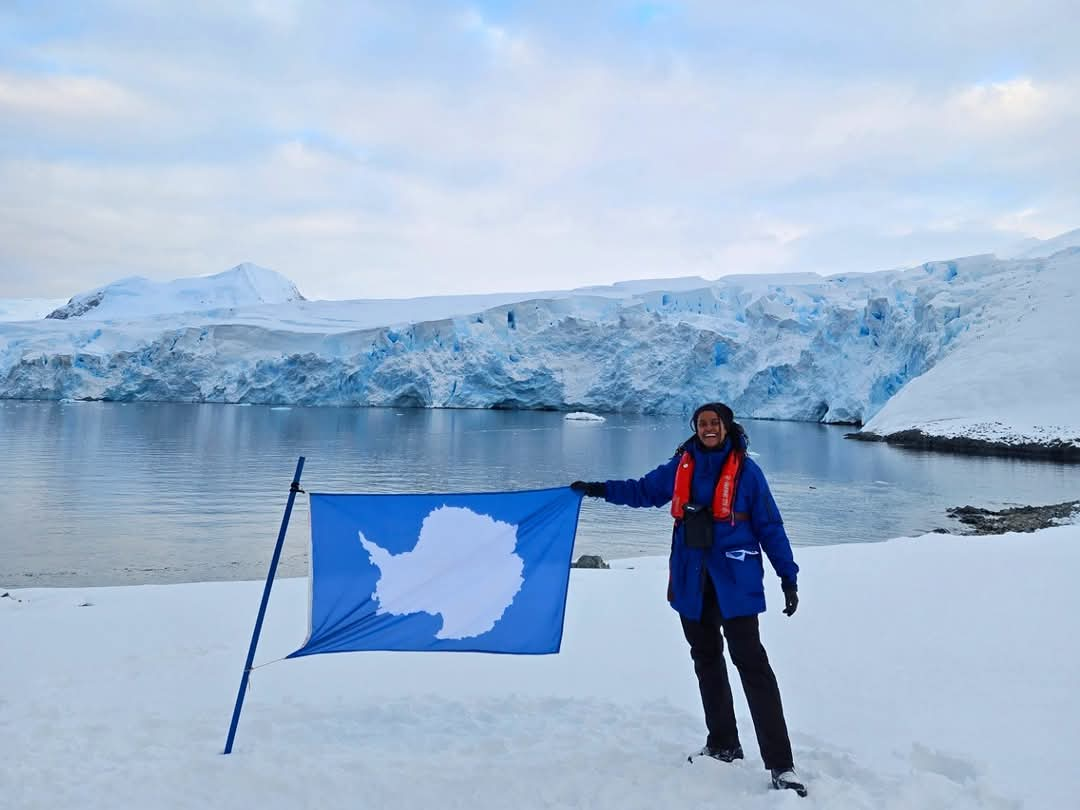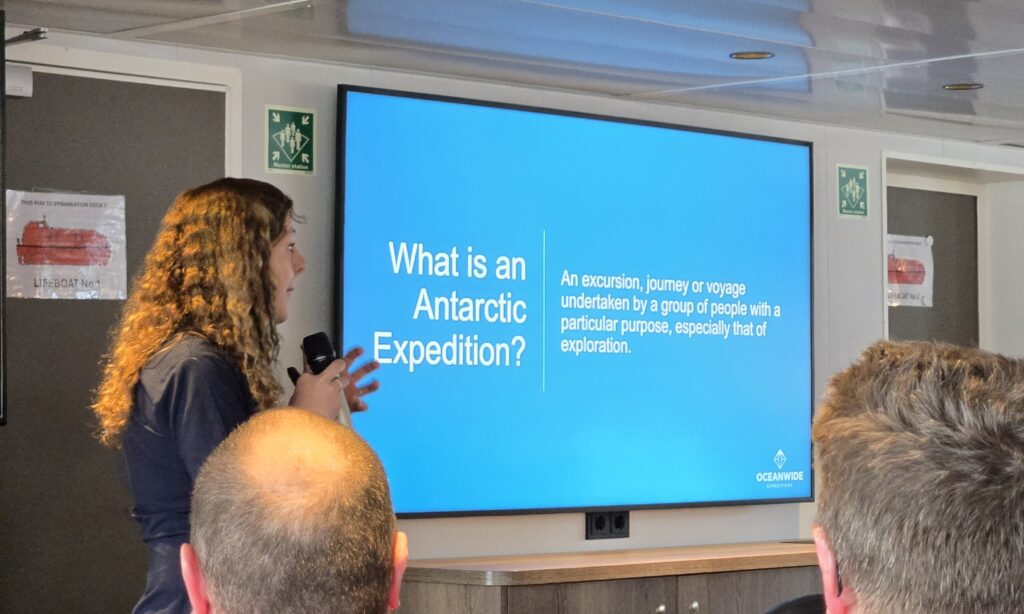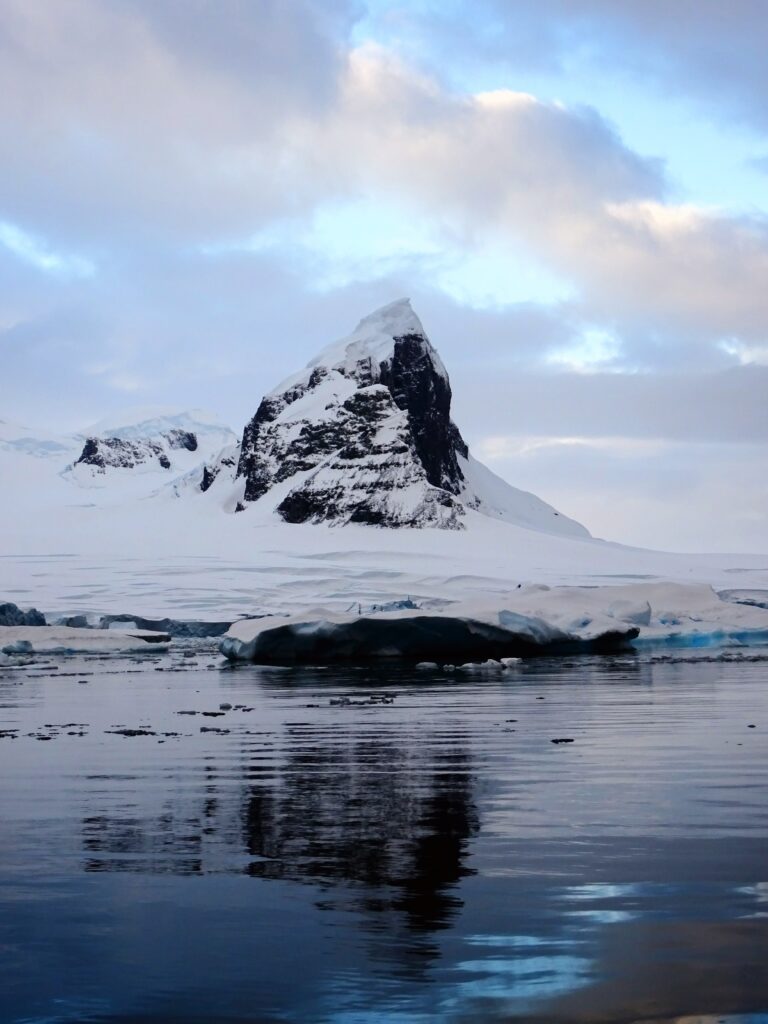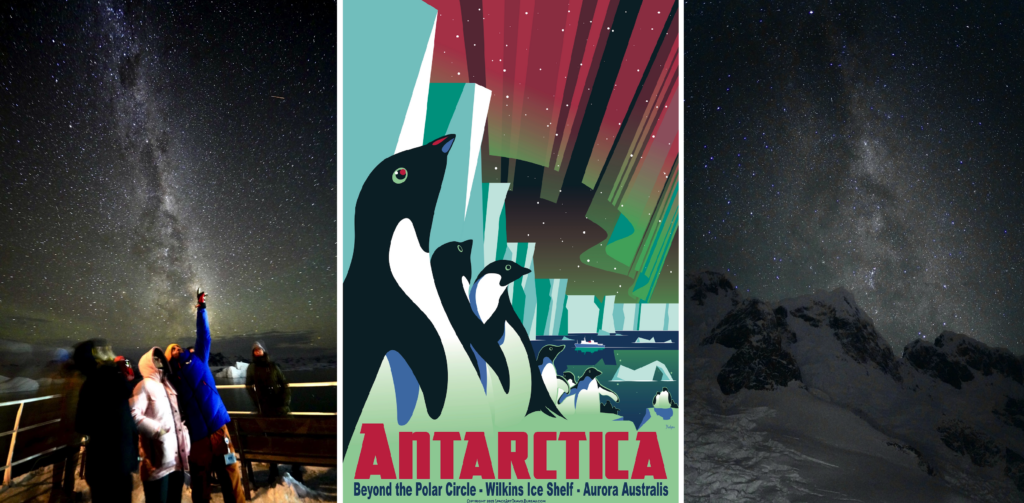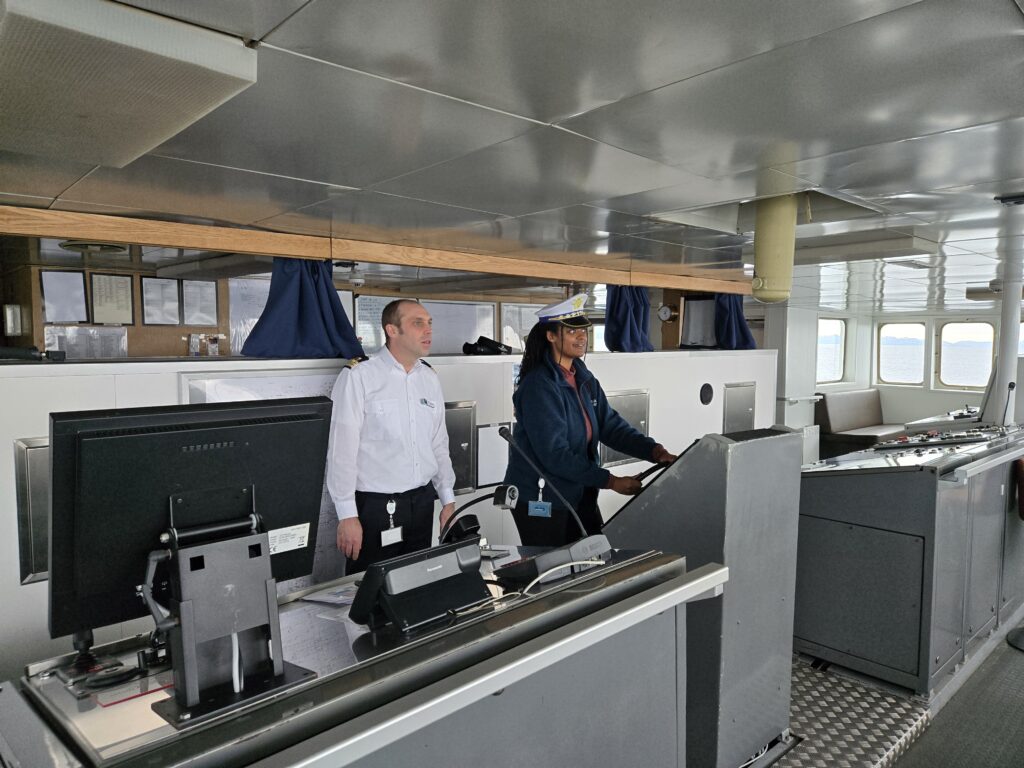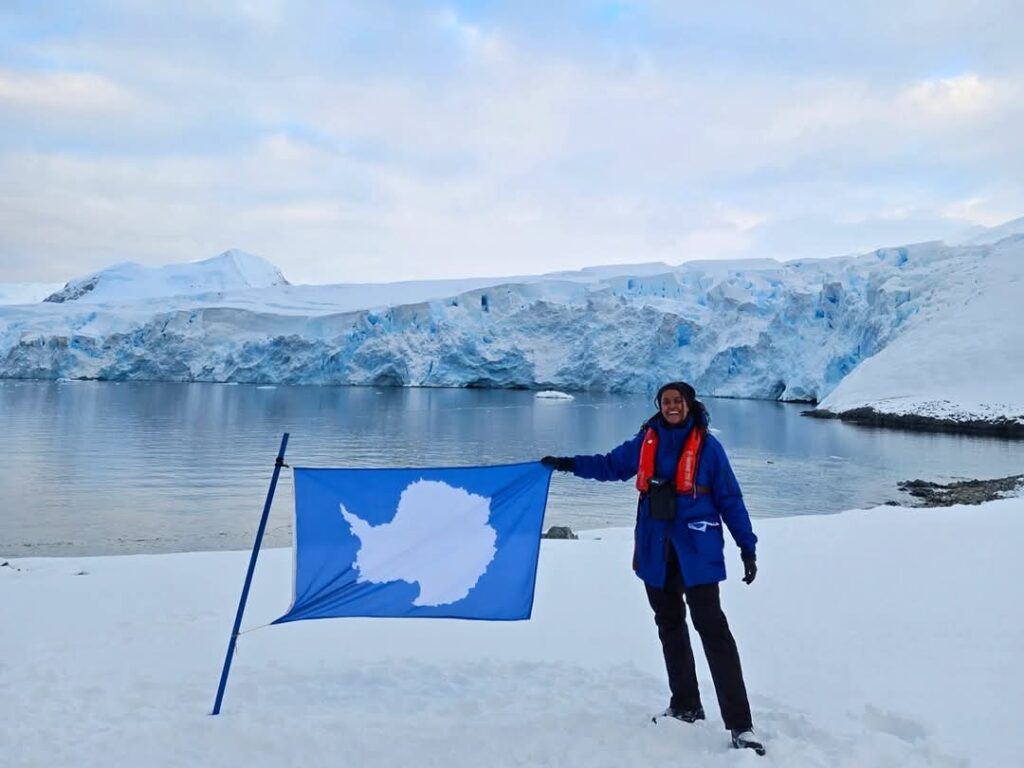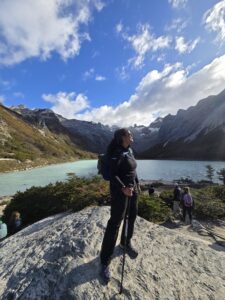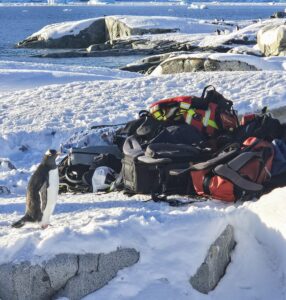Before this trip, I had never spent more than a few hours on any sort of boat. To be honest, I have a bit of a environmental opposition to cruise ships, but there is truly no other way to see Antarctica as a tourist. After comparing several trips, I chose this one to cross off the seventh continent primarily because of the Southern Lights. Funnily enough, the expedition leader immediately discarded upon embarkation because the real schedule maker or breaker was mother nature herself.
.
Days at sea
As much as I love the sea, the Drake Passage informed me that the feeling was not mutual. Getting the Drake Lake over the Drake Shake did not save my dinner the one night I mis-timed my anti-nausea meds. Following the advice of the guides in taking anti-nausea meds is in everyone’s best interest, because hubris will not save you or your dinner.
The days at sea were much less structured and also had less participation because of the prevalence of nausea. I found them to be great opportunities to go through pictures, update my family, get to know other passengers, and read and write. The last days at sea, I also spent quite a bit of time up on the bridge and occasionally on the deck to look up at the stars and talk to the crew.
Passenger days were quite leisurely, but the guides were still often hard at work with lectures and nature spotting. Periodically we were treated to announcements of whales, seals, petrels, albatrosses, and even our first iceberg (my first ever!) We also got an announcement at 12:30am when we officially crossed the polar circle. The days at sea were relaxed and sometimes a welcome break from the hustle and bustle of the days on the zodiacs.
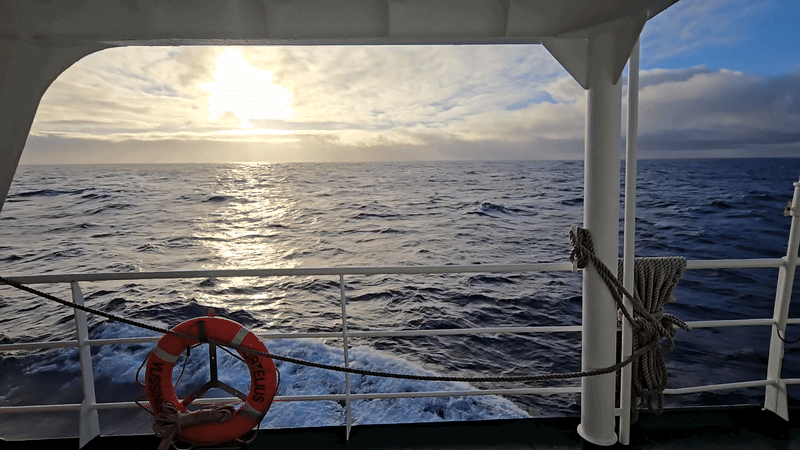
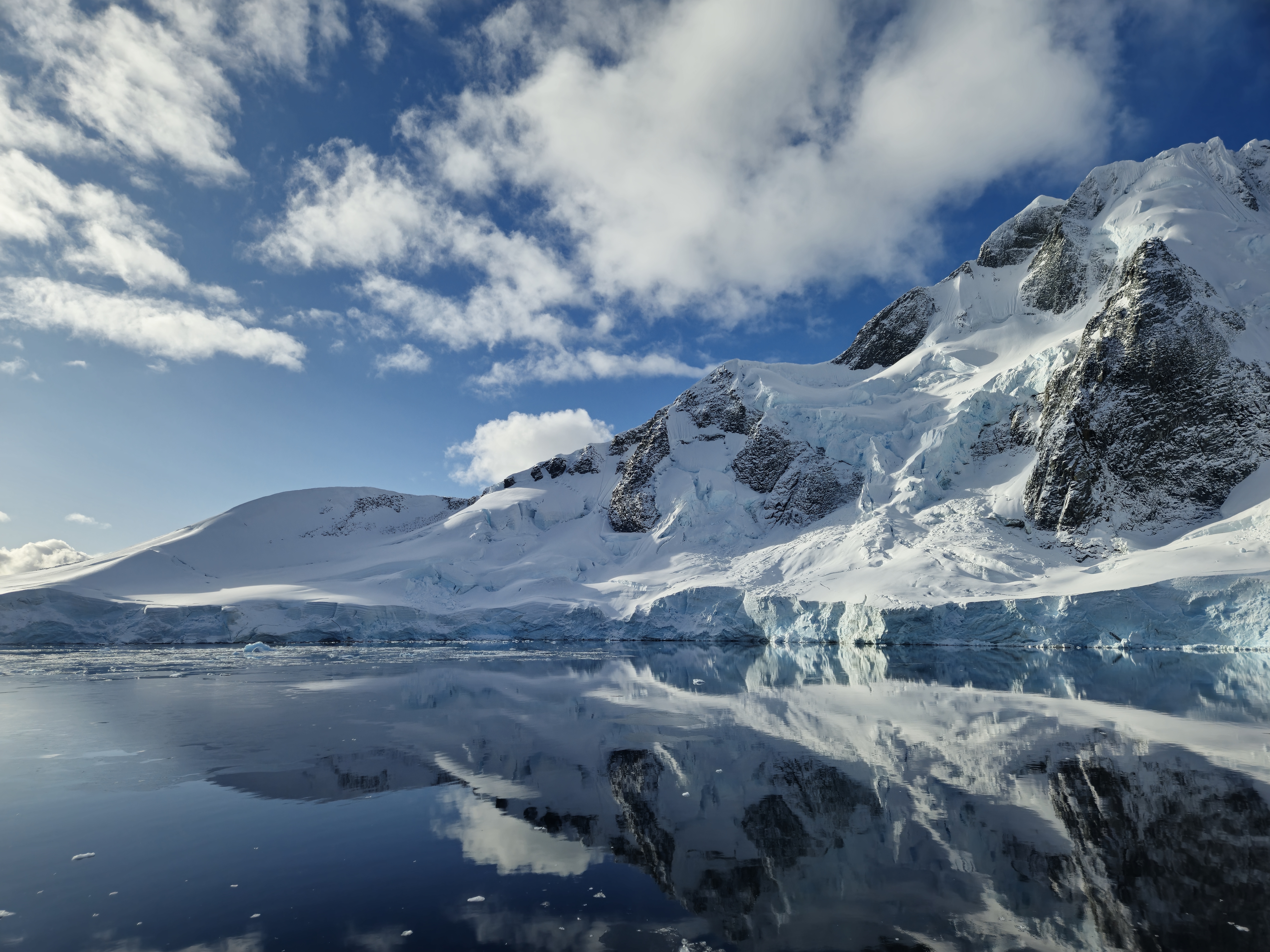
.
Zodiac cruising
For the uninitiated, zodiacs are the reinforced inflatable boats used to cruise around and land on Antarctica. Boarding the zodiacs was a little intimidating due to the slipperiness of the gangway and the potential of losing anything unsecured to the deep sea. Save for one disembarkation in four meter tall waves soaking the passengers, we had no incidents.
We had two main types of zodiac trips: cruises and landings. Cruises allowed us to see wildlife and ice formations up close. The cruises were colder than I expected because of the wind and lack of walking. I appreciated having my hot hands the most on the zodiac cruises, and found them largely unnecessary for landings. Walking is a a great antidote to the Antarctic cold, especially when you have multiple layers of clothes.
Cruising around Antarctica gave us the most magical views of the land and ice. Ice formations remind me of modern art in that I find it amazing and also don’t fully understand it. Plus, sometimes you can find shapes in the ice, like cloud watching. One iceberg in particular looked just like a seal. The (real) seals and penguins were also curious about the zodiacs and approached them frequently!
.
Landing on the white continent
As beautiful as cruising was, the landings were what I was most excited about. Actually stepping foot on Antarctic land was unlike any other experience. Some of the (misogynistic) explorers of Antarctica called it “virginal”, which I don’t agree with in principle but do understand. There were no trails, no advance plans, and even the crew had very little experience in some parts of the terrain.
After having done them, I can group our landings into a few different classes: historical sites, gentle strolls, and hikes. The historical sites were preserved bases from previous expeditions to Antarctica. The East Base was more curated than the other sites, and even showed some of the teams’ tinned food and site plans.
The gentle strolls gave us opportunities to move our bodies after excessive eating and lounging on the ship. They were also the best landings for the older and less mobile passengers. The hikes tested my will to adventure at all, especially as we ascended sheer mountainside covered in fresh snow. My tendency to trail the rest of a group continued into the Antarctic hillsides, especially without a hiking stick. I never thought I would be hot in Antarctica, but the last ascent left me wanting to strip down to my base layer at the top.
That last ascent also gave many the heat needed to do the polar plunge. Before the plunge, I thought it was something for the clinically insane. After talking to the plungers, I think that the polar plunge is for the criminally bored. No one I talked to even deluded themselves into being happy about it—but according to the guides, our group was in the minority. YMMV.

.
Wild life
Before and during the trip we were given rules on being mindful to the land and wildlife, given their isolation. Squatting, kneeling, lying, and placing items on the ground were prohibited due to the risk of avian influenza. We also had strict biosecurity measures for our clothes and shoes, and disinfected our shoes between landings to prevent intra-continental transmission of disease and species. Our recommendations did not influence the wildlife though.
The undeveloped areas far from bases had the most penguins flocking to our group, which I absolutely adored. Seals also occasionally graced us with their presence, and I was endlessly entertained by their movements around the land. Fur seals were a bit more graceful, but the leopard and Weddell seals move in a comical rippling (?) manner.
Sea birds also graced our group with their presence starting from the Beagle Channel. Even the open seas had a (smaller) variety of wildlife. It might’ve been easy to miss these sights, but the guides were constantly on the lookout for animals, aurora, and cool icebergs and made plenty of announcements. We even received an announcement when we had officially crossed the polar circle at 12:30am.

.
Ice cold beauties
Though we didn’t go so far south as to see the South Pole, we did see similarly icy terrain. As important as I knew they were for our planet, I had never given ice or glaciers much thought. After a lecture in glaciology and seeing my first icebergs, I was hooked. The sea was and is a long-time love of mine, so maybe my newfound love of ice is an extension of that.
Were it not for the extreme cold that ensures these beauties survival, I would’ve spent far more time outside staring at them. In the same way that I cloud watched as a child, I ice watched. Mother nature is a fascinating sculptor, and the sheer scale of these pieces was awe-inspiring. It’s difficult to get perspective in Antarctica because of the scale and lack of comparison. Comparing an ice-shelf to an iceberg does not convey the scale of either, but the landscapes were still mesmerizing.
I’m struggling with how much I want to nerd out about glaciology in this post. Rather than try to weave some narration, here’s a rapid-fire of my favorite Ice Facts.
- Blue vs white ice is a matter of compaction and light refraction, with blue ice being more dense and white ice refracting light more
- “Glacier” actually refers to a system of movement of ice and the cycle, hence why things move at a “glacial” pace
- 70% of the freshwater in the world is in the Antarctic, and that water could sustain 3 TRILLION people over their 80 years of life
- The ice of Antarctica is so heavy that it pushes the land mass down, up to 2500 meters at some point
- Antarctica is frozen due to a combination of factors: lack of sun, high altitude (avg of 3000m high), the snow reflecting rather than trapping heat, and the Antarctic circumpolar current (and more!)

.
Amazing aurora and astronomy
In addition to nerding out about the ice in front of us, we also got to nerd out about the skies above us. The main reason I chose this trip above others was because it mentioned the Aurora Australis, aka the southern lights. I didn’t even know these existed before doing research on this trip, but it ended up being the defining feature for me. The aurora were on my list, but I didn’t realize they were bi-polar.
Dr. Tyler Nordgren is an astronomer and artist who not only created beautiful art to commemorate this aurora, but was also why the aurora were highlighted. Both the southern and northern aurora peak approx. every 11 years, and 2025 marked one of these peaks. Even so, aurora chasing is in large part luck. Clear skies, a magnetic fluxes, and positioning all have to be correct, and we were extremely fortunate in this regard. Dr. Nordgren educated us on the aurora and even gave us all advice on the best camera settings to photograph them.
The best place to see the aurora was further south than we were. Even as “far north” as we were, I am a weakling and could only brave the cold for about two hours. But I did see the aurora! They were not quite as vibrant as in the pictures, but seeing them with the milky way was unforgettable. Seeing the milky way and aurora is also impossible in the northern hemisphere, fun fact.
credit to Yan Bertoni for this video!
.
Lovely lecturing
All of the guides on this expedition also gave lectures on their Antartica-related areas of studies. The learning opportunities were a welcome surprise and gave us something to do while laying about the ship. Since the lectures were optional, they had varying levels of participation and attendance. It was a great way to learn how educated other passengers were about various subjects. My fellow passengers covered the entire spectrums of passion, knowledge, and curiosity.
While I did not do much research before this trip, I so enjoyed the live learning opportunities. I have a bunch of notes about everything from the ice of Antarctica to the icy moon of Europa. There’s also something to be said for learning in a classroom-like setting and then immediately seeing it in the real world. There were no, “what does this have to do with me?” moments, because the lessons were all around us. We may have been a captive audience, but at least we left enlightened. I also left with a renewed interest in learning, and learning of the sea specifically.
.
Ship amenities and dining
In my lack of research, I knew nothing of the ship before this expedition. I naively assumed this was a cruise, which I learned is something else almost entirely. There were no gym, sauna, arcades or luxury amenities at all. The Ortellius is an ice-mover intended to be relatively nimble and simply doesn’t have the space for all that.
Honestly, asking for luxuries in Antarctica is a wild concept — thousands of people died making this journey and we were three DAYS from any help at our southernmost point. As our expedition leader said: “it would be quicker to retrieve us from the ISS than the polar circle. Be careful and watch out for each other.” We made it out with 0 injuries and only one cold that ripped through the passengers like wildfire. This was more than enough luxury for me.
The ship and crew however did make space for sixteen days and nights of fine dining. Three meals and a 4 o’clock snack had me feeling like the seals—delighted and jiggly. We were even treated to a barbecue on one of the final nights, a testament to the willpower and skill of the staff. I do not have the body heat for a barbecue in Antarctica, but I loved the spirit!

.
Driving the ship!!!!
A citizen science project I learned about on this trip was Happy Whale. Happy Whale tracks the migratory patterns of whales with user submitted photos of flukes. On this trip, we photographed FOUR whales completely new to science. For a donation, you can also name the whale. To further entice passengers, the expedition leader held an auction, in which I bid on (and won) the chance to drive the mfing ship!!!!
In addition to satisfying my curiosity, I also thought it fascinating that I might be the first black woman to pilot a ship on an Antarctic expedition. Unfortunately, timing did not allow for the driving to be IN Antarctica, but I did get to navigate the ship (very slowly) around Cape Horn. It was an interesting 40 minutes.
As someone with 0 sailing experience, the lag time in the reaction and pulls of the water currents on the boat were disorienting. The steering wheel was both adorable and smaller than expected. I did use a captain hat while steering, but apparently it was for kids and the actual seamen don’t use them. Honking the horn was a lot of fun, but also louder than expected. Sailing is probably not in my future, but I definitely see the appeal!
.
Recap
Sixteen days is hard to condense in a readable fashion. For the extremely curious/nosy, I have an album of my instagram stories during this time, as well as the trip log from the crew. Another passenger/photographer also has a very detailed write-up! The tl;dr is the Antartica is extremely cool, and geographically the coolest in many ways.

